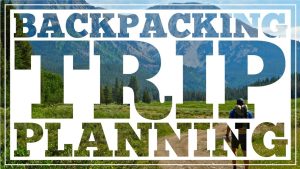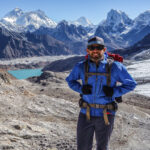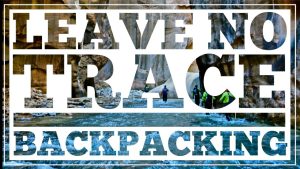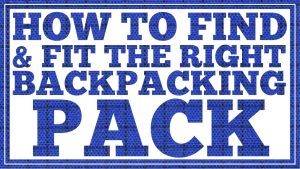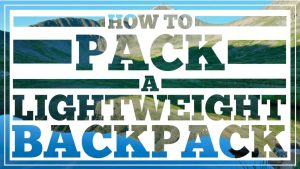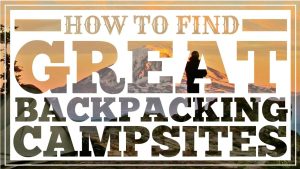Ep. 15 – How to Safely Ford Backcountry Rivers
We independently test everything we recommend.
Buying through links on our site supports our work.
Fording Rivers Safely
I’m Dave Collins with cleverhiker.com, in this episode we’re going to take a look at how to safely ford a river in the backcountry.
If you spend enough time in the backcountry, sooner or later you’re going to have to deal with fording a river to continue along a trek.
Knowing how to cross safely will be incredibly important, especially considering that you may be days away from any help.
Drowning is a real danger in the backcountry and one of the top causes of death among backcountry travelers, so don’t take river crossings lightly.
—
The most important step when fording a river is proper planning. You don’t want to get half way into a crossing only to realize that it isn’t safe and you’re already in trouble.
When you get to a river that you have to cross, take a few minutes to scout out the area. You may have a few crossing options to choose from.
If possible, look for a safe, dry crossing route that other backpackers have taken like a tree that has fallen across a river.
Rock jumping or boulder hopping is another good method, but only try it if you have sure balance and a light pack.
If you see a side trail branching up or downstream along the river, it’s likely a path that other backpackers have made walking to a safer crossing route.
But always be very careful of dry crossing routes. A risky dry crossing can easily turn into a wet crossing and could put you in very serious danger.
Always look for slippery surfaces or rocks that could shift under your weight. If you’re nervous about walking across on a log, consider sitting on your butt and shimmying across safely.
Also, be very careful of logjams, and only cross if they are clearly safe. Logjams are formed when debris gets swept downstream in floods.
They can be very unstable and if you fall in upstream, they can trap you under the water.
—
If there is no clear dry crossing route, you’ll have to plan a safe river ford.
Look for a wide area in the stream where the water will be shallower and the current won’t be as strong.
Take some time to look for a good fording spot. River crossing points can be better at different times of the day and at different times of year, so always search for the most ideal location.
High-elevation streams are fed by glaciers and snowmelt. They will be much easier to cross in the morning after a cold night has slowed melting and rivers are flowing with less water.
Make sure to look downstream to plan an escape route for if you do fall in.
Never make a questionable crossing above a dangerous feature like a waterfall or an overhanging tree that could trap you under the water.
Also, make sure to consider the height and experience level of everyone in your group.
Slower water generally shouldn’t be above your thigh and fast moving water shouldn’t be above your knee.
You can test the force of the river with your trekking pole or by throwing rocks and sticks in to see how fast the water is moving and how deep it is.
—
Before you cross, make sure all of your important items are sealed in watertight bags and double bag any electronics.
Consider removing your pants and socks to keep them dry for the other side.
But if you’re going to be fording multiple rivers during the day, it probably makes sense just to leave them on and save time.
Unclip the hip belt and sternum straps of your pack before you cross as well. Water is heavy and if you fall in your pack will quickly fill up.
When your pack is full of water, it will be very hard for you to stand up and regain your balance. So, if you do fall in, you’ll want be able to quickly remove your pack.
When you’re deciding on footwear for your crossing, it’s best to air on the side of caution.
Consider the fact that you probably won’t be able to see the bottom of the river, the rocks will be very slippery, the current will be strong, and you really don’t want to risk falling in.
For those reasons, it’s generally a very bad idea to cross a river barefoot and it may even be unsafe in open-toed sandals.
Most lightweight backpackers choose to keep their running shoes on for river fording. It will be much safer that way and your shoes will dry very quickly.
Another option would be to bring water shoes if you know that you’ll be doing a lot of fords. Changing shoes will add extra time and weight to your trip though.
—
When it’s time to cross, face upstream and work your way across the river traveling at a 45-degree angle downstream.
Your balance will be better facing upstream and you won’t have to fight the current as much if you walk at a slight angle downstream.
Shuffle your feet from side to side without lifting your legs much. The water will be cold but don’t rush. Make sure that your footing is secure with every step.
Use a walking pole or trekking pole for increased stability. Place the pole in front of you upstream and keep your weight forward.
Always keep at least two points of contact on the river floor while you shuffle across.
If you’re with a group, you can safely cross together for more stability. Form a triangle facing inward with your hands on each other’s shoulders.
The heaviest hiker should be upstream breaking the current for the other two.
After you cross safely, it’s important to warm your body up. Dry off quickly with your pack towel and start hiking again to get your blood moving.
—
If you feel like you’re going to fall while crossing, it’s better to fall forward on your hands and knees. That way you’ll be able to get up quicker and your pack won’t get as wet.
If you do fall in, don’t panic. If you can, stand up again quickly. If your pack is keeping you from getting up, ditch it. It’s better to lose your pack than to lose your life.
If the current takes you downstream, flip on your back with your feet in front of you facing downstream. That’s the safest way to protect yourself from any boulders in the water.
As soon as you safely can, swim to shore and reassess your situation.
If you’ve lost your pack, you’re probably in a survival situation, so staying calm, getting warm, and making smart decisions will be the key to staying alive.
—
Remember, unsafe river crossings are completely avoidable. Proper planning and preparation will make all the difference.
If you know there will be river fords along your route, mark your map, and prepare in advance.
If you can, learn about river fords beforehand by calling a ranger station or checking online.
And if you ever start a river ford and feel unsafe, you can always turn around and find a better place to cross.
It’s always better to turn back and be safe than to take an unnecessary risk.
With proper preparation you’ll find that river crossing can be a safe and fun way to explore backcountry areas that many travelers never get the chance to see.
I’m Dave Collins with cleverhiker.com, hike light, hike smart, and have fun.
MORE EPISODES IN THIS SERIES
View all